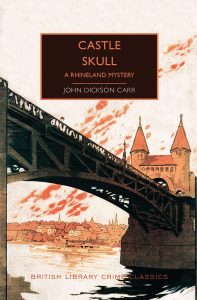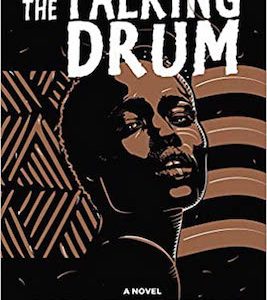A few years back, if you enjoyed classic crime fiction and wanted to explore authors less familiar than Agatha Christie and a handful of others, you were out of luck. Most vintage detective novels were simply unobtainable. Today, it’s a very different situation—the classic crime fan is spoilt for choice. A whole new generation of fans now has the joy of discovering treasure long buried in the British Library’s archives. The global success of the British Library’s Crime Classics series has reintroduced authors, novels, and short stories long forgotten, appearing as they did in the first half of the twentieth Century. Their lovely period cover artwork makes the books devilishly collectible, while the stories provide wonderful escapism (especially valuable in times as strange as these…!).
Here in the U.S., Poisoned Pen Press/Sourcebooks publishes the Crime Classics, which have re-presented the work of such authors as John Dickson Carr, E.C.R. Lorac, George Bellairs and R. Austin Freeman.
We talked to series consultant—and the 2020 recipient of British crime writing’s highest honor, the CWA Diamond Dagger—Martin Edwards, author of the Lake District Mysteries and the Rachel Savernake Golden Age mysteries, whose involvement with the BLCC began in 2014 with The Cornish Coast Murder by John Bude.
Michael Barson: With John Dickson Carr’s 1931 suspense novel Castle Skull about to be reissued, you are presenting a work from one of the truly esteemed names of the British golden age. But many of the British Library Crime Classics that you have helped select (along with series founder Rob Davies) offer works written by much more obscure names. Can you tell us about one in particular that you were particularly pleased to rediscover?
Martin Edwards: I’m rather spoilt for choice, but Anthony Rolls was certainly very obscure until we republished him. This was the pen-name of C.E. Vulliamy, an accomplished and versatile writer. Family Matters is my favourite of his books, and I’m in good company, since Dorothy L. Sayers was another fan. It’s a fascinating story, a genuine one-off among murder mysteries. And it’s a good example of a very rare book now readily available in a nice paperback edition at a modest price.
MB: Since Poisoned Pen Press began publishing the American editions of the Crime Classics in 2014 have you had any feedback indicating that your American readers might possess a different take on the novels than your British readers? And if so, does this mirror their reaction to your own novels?
ME: My impression is that fans of this series in all countries—from China to California, by way of Cheshire—enjoy the books on two levels. First for the stories, and second for the insight into social history. American fans may favour English novels with a rural setting—for instance, stories like ECR Lorac’s Fell Murder and Fire in the Thatch—just as they have responded very positively to my own Lake District Mysteries. Perhaps American readers are attracted by the idea of crime disrupting the tranquil British countryside…
MB: Your own most recent novel, the very well received Gallows Court (2019), happens to be set in 1930, the same period as Carr’s Castle Skull. Is the decade of the Thirties your own ground zero of favorite British mysteries? And if so, why?
ME: 1930 was, I think, a pivotal year in the development of detective fiction. Golden Age whodunits had become enormously popular during the 20s, and the game element of those stories, the challenge to the reader, was a key component. Writers experimented with psychological, and the fictional representation of real life crimes, and the economic depression and increase of international tension filtered through into the books of the time, even though storytelling remained paramount. The Detection Club, of which I’m the current President, was founded in 1930 by Anthony Berkeley, and that same year saw the first Miss Marple novel, The Murder at the Vicarage as well as Berkeley’s ground-breaking The Second Shot and Dorothy L. Sayers’ Strong Poison, which introduced Lord Peter Wimsey to Harriet Vane and established the idea of the Great Detective who ‘grows’ as a character through the series.
So when writing Gallows Court, a novel which I hoped would cast fresh light on Golden Age fiction as well as providing readers with a twisty and exciting entertainment, I thought that 1930 would provide the ideal background. The same is true of Mortmain Hall, my new novel, and an even more direct tribute to the Golden Age of detective fiction, complete with its own Cluefinder at the end of the book.
MB: Your Edgar-winning study The Golden Age of Murder (2018) introduces a wide range of authors whose names are little known to many of today’s crime fiction readers. Is there one in particular whom you would like to rescue from obscurity but for some reason have not yet been able to publish in the BL Crime Classics series?
ME: I’m a fan of Milward Kennedy, an extremely interesting writer and a disciple of Francis Iles (the alter ego of Anthony Berkeley) who was also a leading light in the Detection Club. He was an ambitious if variable writer, well worth reading. So far the British Library has not been able to secure the right to republish any of his books, but I’m keeping my fingers crossed.
MB: Has a suggestion ever come in from one of your readers that led to the British Library Crime Classics actually issuing (or planning to issue) a lost novel that hadn’t already been on your radar?
ME: The two Sergeant Cluff novels by Gil North, both published in the 1960s, are the best examples. Cluff is Yorkshire’s answer to Maigret.
MB: In the course of serving as British Library series consultant, have you read a work that you literally had never heard of before, only to discover that it was a genuine gem?
ME: I enjoyed Murder of a Lady by Anthony Wynne, an obscure specialist in locked room mysteries. Some of his other books are variable in quality, but that story is very enjoyable.
MB: Your award-winning book The Story of Classic Crime in 100 Books is in some respects a companion to the series, although it covers a very wide range of novels. What prompted you to write it?
ME: I wanted to trace the evolution of crime fiction In the first half of the last century, from The Hound of the Baskervilles to Strangers on a Train, and to tell a story in so doing, rather than producing a straightforward, conventional reference book. The books I picked to illustrate the main themes range from famous classics to highly obscure titles, some of which are still out of print. This kind of variety appeals to me enormously. ‘Classic crime’ actually encompasses a very wide range of fiction and the idea of the book was to celebrate that diversity, and to explore the pleasures that classic crime stories afford to so many people all over the world.


















